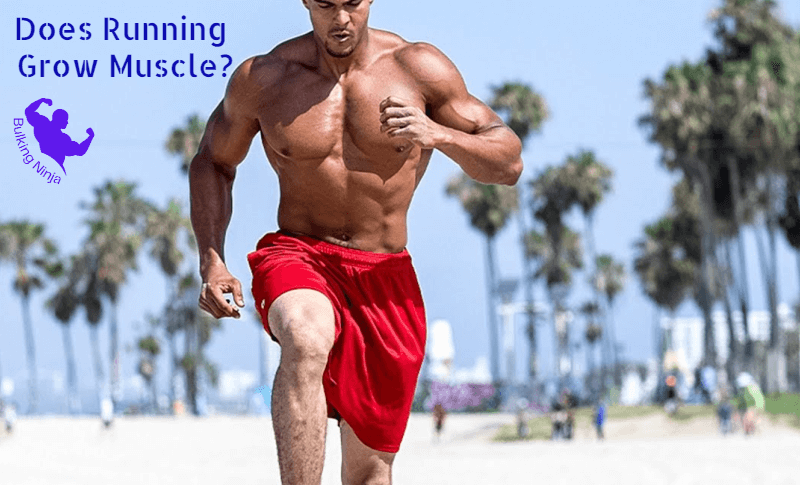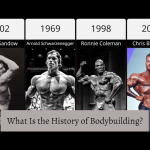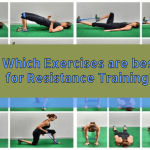we delve into the fascinating world of fitness and explore the age-old question: “Does running grow muscle?” For decades, the pursuit of a well-rounded physique has led athletes and fitness enthusiasts alike to experiment with various forms of exercise.
Among them, running has earned a reputation as a go-to cardiovascular workout that enhances endurance and burns calories. But what about its impact on muscle growth? Can pounding the pavement truly build and sculpt muscles?
In this article, we will unravel the science behind running and its effects on muscle development, providing you with a comprehensive understanding of how this seemingly simple activity may or may not contribute to your muscle-building goals. So lace up your running shoes and get ready to explore the fascinating relationship between running and muscle growth!
Table of Contents
- Does Running Grow Muscle?
- What is running as exercise?
- What is Proper Running Form?
- What Muscles Does running Work?
- There Are Many Types of Running
- Running and its Health Benefits
- Frequently Asked Question
- What is the simple definition of running?
- What is a few words about running?
- Will Running Build Calf Muscle?
- Does Running Build Chest Muscles?
- Does Running Build Core Muscles?
- Does Running Build Neck Muscles?
- Does Running Increase Arm Muscle?
- How Much Running To Gain Muscle?
- What Are Signs That running Gaining Muscles?
- How Do Running Take To Hardest Muscle And Easiest Muscles To Build Muscle?
- does running build muscle?
- Does running build leg muscle?
- Does jogging build muscle?
- What is the difference between running and building muscle?
- Conclusion
Does Running Grow Muscle?
Running has been found to have a positive impact on muscle development, as studies suggest that it can help build muscle mass, particularly in the quadriceps.
However, the extent of muscle building may vary among individuals depending on factors such as the amount and distance of running. Short distance bouts of sprinting, in particular, have shown to be beneficial for muscle growth. On the other hand, long distance runners may experience a decrease in muscle mass.
It is important to note that nutrition plays a crucial role in muscle development while running. Eating properly and providing the body with the necessary nutrients and supplements is essential to support muscle growth.
Failing to maintain adequate nutrition may result in a calorie deficit, leading to weight loss rather than muscle gain. Therefore, a balanced diet and proper support are key to maximizing the muscle-building potential of running.
What is running as exercise?

Running and jogging are both forms of aerobic exercise that involve the use of oxygen to produce energy. During these activities, the body utilizes blood glucose and body fat to generate the necessary energy.
The term “aerobic exercise” refers to any physical activity that promotes cardiovascular fitness and overall health. Running and jogging are effective ways to engage in aerobic exercise and enhance endurance, leading to potential improvements in muscle strength and tone. These activities can contribute to the development of lean muscle mass and may aid in achieving a more sculpted physique. Futher more study indoor Cycling grow muscles.
What is Proper Running Form?
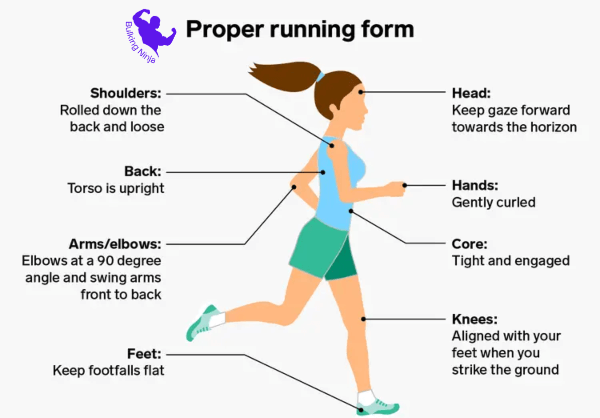
Proper running form refers to the optimal technique and body alignment while running to maximize efficiency, minimize the risk of injury, and enhance performance
Upper Body Running Form
Running is a fantastic activity for building muscles, especially when performed with proper running form. The upper body plays a crucial role in maintaining balance and reducing stress on the neck and spine.
By keeping the head upright and the gaze forward, runners can achieve an upright posture that promotes muscle engagement and reduces strain. Maintaining a proud chest and relaxed shoulders further contribute to proper alignment, preventing rounding and enhancing speed. Futher more study Clapping Pushs Ups for Grow Muscle.
The pumping motion of the arms while running increases momentum and adds to the overall muscle activation. By achieving proper running form and incorporating these techniques, runners can effectively build and strengthen muscles throughout their body. read more about Inline pushups for gain muscles.
Lower Body Running Form
Running is an excellent exercise that can help build muscles, particularly in the lower body. To maximize muscle development and prevent injuries, it is important to maintain proper running form. Achieving the right form involves focusing on the lower body, including the knees and toes.read more about gain muscle from jogging.
By keeping the knees in line with the toes, runners can conserve energy and run for longer distances. Each person has their own unique stride, and while it is not crucial to land on a specific area of the foot, avoiding a heavy heel strike can reduce the risk of injury.
Instead, landing on the mid-foot or forefoot can be more beneficial, allowing runners to stay light on their feet and propel themselves forward. By paying attention to proper form and technique, runners can optimize their muscle-building potential while enjoying the many benefits of running. Read more about Wide Grip push ups.
What Muscles Does running Work?
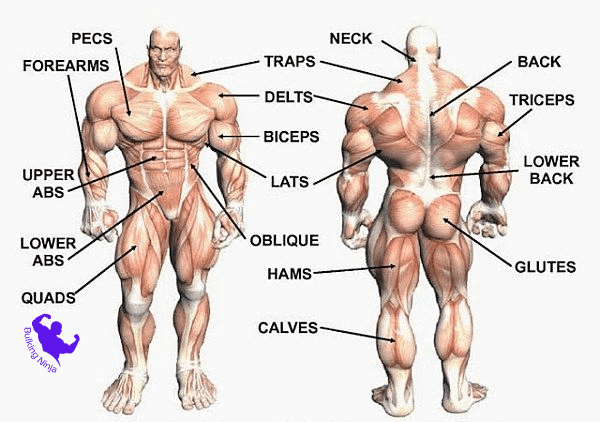
Running is a highly effective full body exercise that engages a variety of muscles throughout the body.
The lower leg muscles, including the Hamstrings, Quadriceps, Glutes, and Calves, are actively involved in the running motion.
The Hip flexors also play a significant role in the running stride, contributing to the movement and stability of the legs.
Running is not restricted to the lower body, because it also engages the Core muscles, which provide stability and balance during the activity.
While the upper body is involved to a much lesser extent, it still plays a supportive role in maintaining proper form and balance while running.
Regular running, even for a few minutes per day, can help increase muscle tone and strength in the legs.
Engaging in running as a consistent exercise routine offers a wide range of health benefits, such as improved cardiovascular fitness, increased endurance, and overall muscle tone.
Through focusing on multiple sets of muscles group and offering a full body workout, running contributes to the development of a strong and toned physique.
Make sure to heed your body and gradually enhance running duration and intensity to prevent overexertion and reduce the risk of injuries. Let’s Start Your Bulking Journey with Best Easy High Protein Breakfasts for Muscle Building.
How running affects your muscles?
Running, including high-intensity interval training (HIIT), can effectively build lower body muscles. A study conducted on college students demonstrated that after 10 weeks of HIIT workouts, there was a significant increase in the muscle fiber area of their quadriceps compared to the control group. Sprinting, a form of high-intensity running, has been shown to benefit muscle growth.
Additionally, aerobic exercise like running inhibits proteins that interfere with muscle growth and decreases muscle protein breakdown (MPB). However, it’s important to note that long-distance running can increase MPB and potentially hinder muscle growth.
So, incorporating a combination of high-intensity, short duration running and appropriate recovery can optimize muscle building while enjoying the benefits of running. More read about Breakfast is important for gaining Muscles.
How Running Helps You Lose Weight?
Running helps you lose weight by burning calories and increasing your overall energy expenditure. It is a high-intensity cardiovascular exercise that engages multiple sets of muscles, resulting in increased calorie expenditure while and after the activity.
Running also improves your metabolism, aiding in the burning of more calories throughout the day. Additionally, regular running can contribute to the reduction of body fat and the maintenance of a healthy weight. More read about Most Important Types of Pushups for gaining Muscles.
There Are Many Types of Running
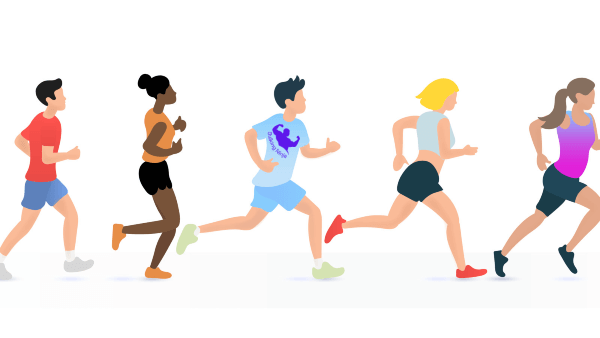
Running encompasses various styles, each with its specific purpose and benefits. These are some popular forms:
Base runs
These are typical runs, usually around 6 miles (10 km), performed at your natural pace. They serve as a foundation for your running routine.
Long runs
Longer versions of base runs, covering approximately 10-12 miles (15-20 km) at the same pace. They enhance overall fitness and endurance.
Interval runs
Short and intense runs repeated multiple times with brief breaks in between. For instance, you might do 5 sets of 0.5 mile (800 meters) runs with 1/4 mile (400 meters) light jogging intervals. Interval runs focus on improving running power and speed.
Hill repeats
Similar to interval runs, but these are performed uphill. For example, you might do 10 sets of 1-minute hill repeats. They enhance , speed, running power, and stamina.
Recovery runs
Slow-paced runs carried out after more challenging runs, such as hill repeats, to add extra distance to your overall run. These runs aid in recovery and allow your body to adapt.
Progression runs
These runs simulate competition-style scenarios by starting at a slower pace and gradually increasing to a quicker tempo. They develop stamina, velocity, and decrease fatigue. For instance, you might run 5 miles (8 km) at a natural pace, followed by 1 mile (1.5 km) at a faster pace.
Each of these running styles contributes to your overall running performance, helping you improve endurance, speed, and stamina while providing variety and enjoyment to your training routine.
Running and its Health Benefits
Running is a popular form of exercise that offers a range of health benefits. One of the common questions associated with running is whether it builds muscles. Let’s explore the topic and examine the relevant factors.
Weight Loss
Running is known to be an effective exercise for weight loss.It aids in the burning of calories and shedding extra body fat.
Heart Disease Risk Reduction
Studies have shown that running, even at low speeds, can reduce the risk of heart disease. A 15-year study with a large number of participants revealed a significant risk reduction.
Blood Sugar Management
Running can improve insulin sensitivity in muscle cells. This aids in regulating blood sugar levels and prevents diabetes-related issues.
Cataract Prevention
Both moderate-pace walking and vigorous running have been linked to a reduced risk of cataracts. Engaging in more exercise leads to further risk reduction.
Falls Prevention
Elderly individuals who engage in running are less likely to experience falls.Running strengthens leg muscles and enhances responsiveness, reducing the risk of falling.
Knee Health and Myths
Contrary to a common myth, running does not cause knee damage. Research analysis indicates a positive association between physical activity, knee tissue strength, and healthier knees.
In fact, running can help reduce knee pain and is not linked to arthritis.
Note: The content provided is for informational purposes only and should not be considered as medical advice. It is always recommended to consult a healthcare professional before starting any new exercise regimen. Read more about the difference between jogging, running and sprinting
Frequently Asked Question
What is the simple definition of running?
The simple definition of running is the act of moving swiftly on foot, with a sequence of steps where both feet are off the ground simultaneously at some point during the motion.
What is a few words about running?
Running is a popular and oldest form of exercise and sport that is good for health. It helps with breathing and heartbeat while burning professional advice. It is always recommended to consult a medical.
Will Running Build Calf Muscle?
Yes, running can help build calf muscles as it is an effective calf-strengthening exercise. Running uphill or engaging in running sports that involve jumping, pushing off, and quick changes in direction can specifically target and strengthen the calf muscles.
Does Running Build Chest Muscles?
While running is primarily a lower body exercise, it also engages several muscle groups in the upper body, including the muscles of the arms, chest, back, and shoulders.
While running does not specifically target or isolate the chest muscles, it can contribute to overall upper body strength and toning. However, if the goal is to specifically build chest muscles, incorporating targeted chest exercises into your workout routine may be more effective.
Does Running Build Core Muscles?
Yes, running can help build core muscles. When you sprint, your abdominal muscles automatically engage to maintain good form and posture. This engagement and activation of the core muscles during running contribute to their strength and development. Additionally, running can also help reduce body fat levels, which further enhances the visibility and definition of the core muscles.
Does Running Build Neck Muscles?
Running does not directly build neck muscles. However, if your body is not in proper alignment while running, it can lead to more pressure and strain on your neck, which may result in neck pain. It’s important to maintain proper posture and alignment during running to minimize the strain on the neck and prevent any potential discomfort or pain.
Does Running Increase Arm Muscle?
Running can help in reducing overall body fat, including in the arms, which can enhance the appearance of muscle definition. If the goal is specifically to increase arm muscle, incorporating targeted arm exercises into your workout routine would be more effective.
How Much Running To Gain Muscle?
To gain muscle through running, incorporating High-Intensity Interval Training (HIIT) workouts can be effective. Sample HIIT running workouts,
such as 6 sets of 20-second sprints at maximum intensity separated by 2 minutes of walking or light jogging, or 5 sets of 30-second sprints at maximum intensity separated by 4 minutes of walking or light jogging, can stimulate muscle growth.
Nevertheless, it’s crucial to note that constructing muscle through running alone might be limited, and combining it with other resistance training exercises can yield better results.
What Are Signs That running Gaining Muscles?
Some signs that you must gained body weight changes, clothes fit differently, building strength, muscles looking “swole,” and body composition has changed.
How Do Running Take To Hardest Muscle And Easiest Muscles To Build Muscle?
How Do Running Take To Hardest Muscle And Easiest Muscles To Build Muscle?
The time it takes to build muscle through running varies depending on individual important factors, such as genetics, diet, workout intensity, and consistency. Generally, running that target the hardest muscles, such as the chest, shoulders, and legs, may take several weeks to a few months to see noticeable muscle growth.
Easiest muscles to build, such as the biceps and trapezius, may show some improvement in a similar time frame, but results can differ for each person. The effectiveness of running in building muscle also depends on proper form, progressive overload, and sufficient recovery between sessions.
does running build muscle?
Running primarily focuses on cardiovascular endurance and can help tone leg muscles but is not a primary muscle-building activity.
Does running build leg muscle?
Running can help tone and strengthen the leg muscles, particularly the quadriceps, hamstrings, and calf muscles, but it is not as effective as resistance training for significant muscle growth in the legs.
Does jogging build muscle?
Jogging can help improve muscle tone and endurance, particularly in the leg muscles, but it is not a primary activity for significant muscle building. Resistance training exercises are more effective for muscle growth.
What is the difference between running and building muscle?
Running improves cardiovascular endurance and leg muscle tone, while muscle building involves resistance training for significant muscle growth and strength.
Conclusion
Running is a great exercise for weight loss. It burns calories during and after the workout, suppresses appetite, and targets belly fat. It improves overall health and fitness, requires minimal equipment, and can be done anywhere.
Whether you run alone or with a partner, it offers a variety of benefits and keeps your workouts engaging. Stay motivated and change your routines to maximize muscle building while enjoying running’s advantages.
